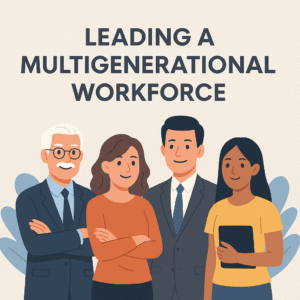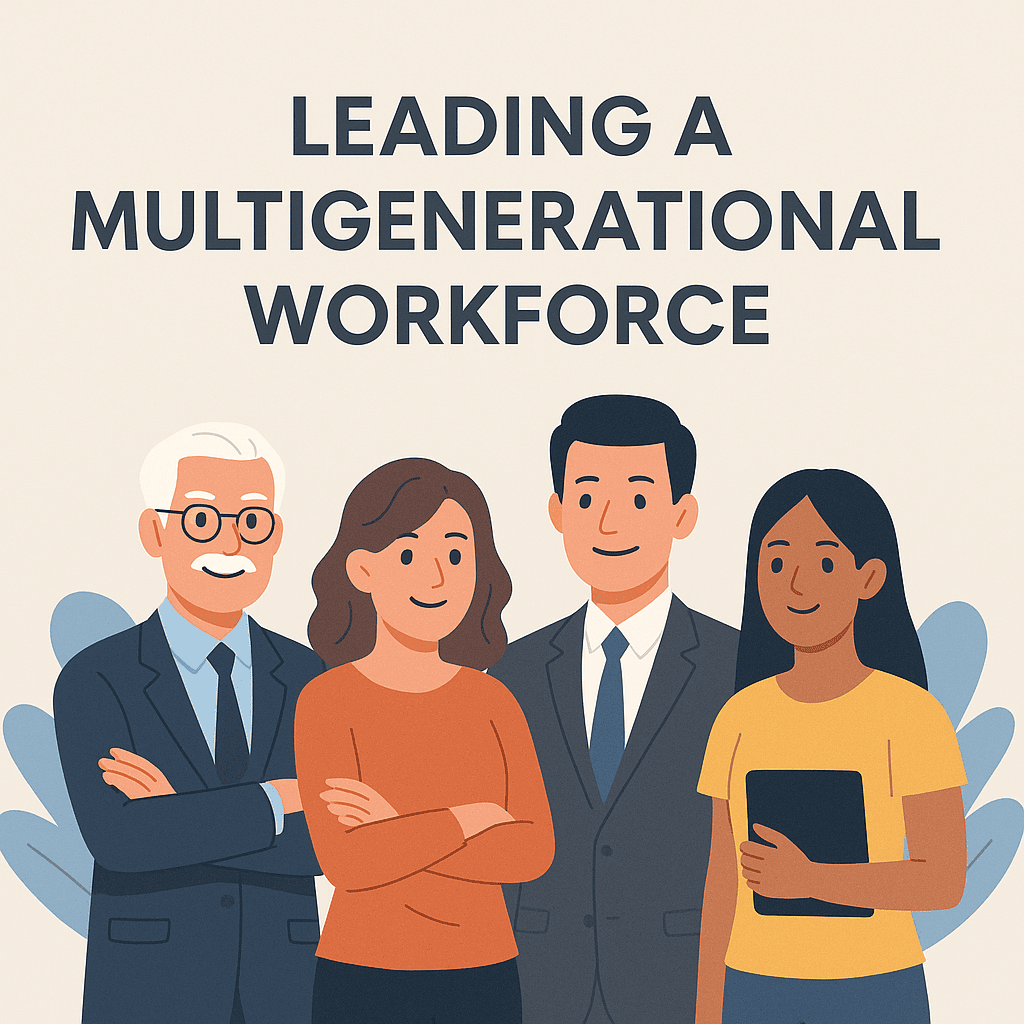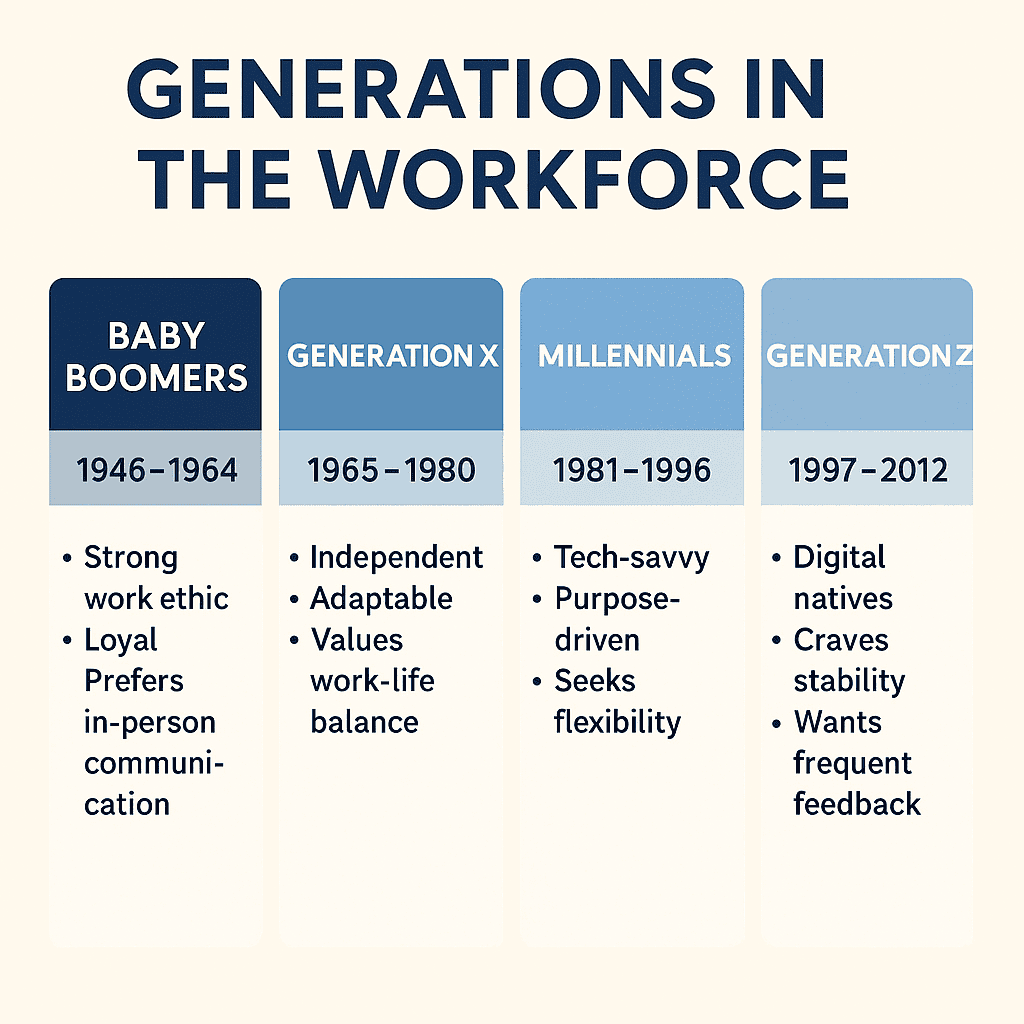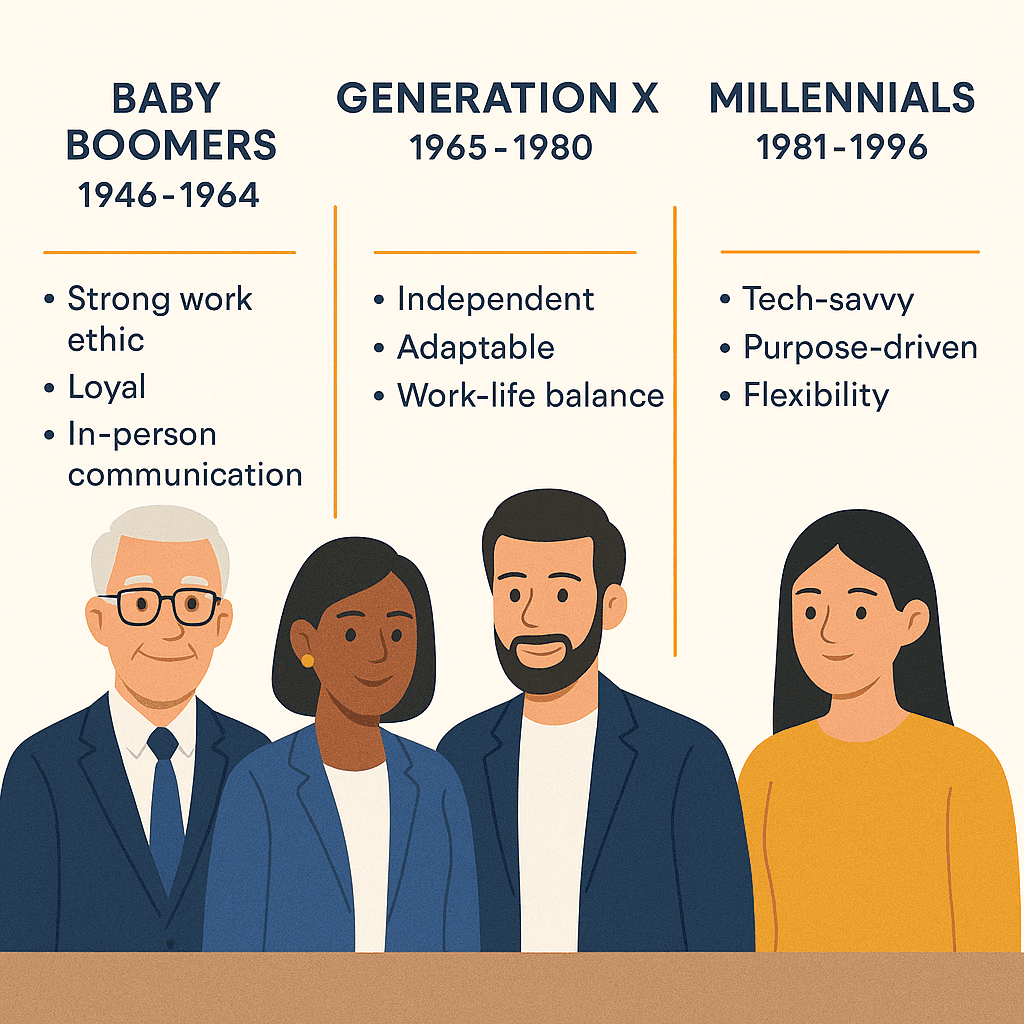Leading a Multigenerational Workforce
As a leader—whether you’re an executive, hiring manager, business owner, or team lead—you’ve likely noticed the growing diversity in today’s workforce. With employees ranging from Baby Boomers to Gen Z, the mix of ages, experiences, and work styles can pose unique challenges. However, by bridging these generational gaps, you can create a collaborative, high-performing team that drives innovation and success.
Understanding Generational Diversity in the Workplace
Today’s workforce spans multiple generations, each with distinct characteristics that shape how they work and interact:
Baby Boomers (1946–1964): Known for their strong work ethic and loyalty, Boomers value in-person collaboration and often prefer face-to-face communication. They may be slower to adopt new technologies but bring deep expertise and stability.
Generation X (1965–1980): Independent and adaptable, Gen X prioritizes work-life balance and often questions traditional corporate norms. They’re versatile and serve as a bridge between older and younger generations.
Millennials (1981–1996): Tech-savvy and purpose-driven, Millennials seek flexibility and meaningful work. They value growth opportunities but may sometimes be seen as demanding.
Generation Z (1997–2012): As digital natives, Gen Z craves stability and seamless work-life integration. They thrive on frequent feedback and are highly comfortable with technology.
Recognizing these differences is the foundation for effective leadership in a multigenerational workplace.
Challenges of Leading a Multigenerational Team
Leading across generations comes with its share of challenges:
Communication Preferences: Each generation favors different communication methods, from in-person meetings to digital platforms, which can lead to miscommunication if not managed thoughtfully.
Work Style Variations: Attitudes toward flexibility, technology, and workplace structure differ, potentially causing friction among team members.
Diverse Career Goals: From stability to growth to innovation, each generation has unique priorities that require tailored leadership approaches.
As a leader, addressing these challenges with empathy and strategy can turn diversity into a strength.
Strategies for Leading a Multigenerational Workforce
Here are practical strategies that are effective for leading diverse teams and fostering collaboration:
Tailor Communication to Each Generation
Adapt your communication style to suit different preferences:
Baby Boomers: Prioritize face-to-face or phone conversations to build trust and clarity.
Gen Z and Millennials: Use instant messaging tools like Slack or Teams for quick, tech-driven communication.
Gen X: Offer a mix of direct and digital communication to align with their adaptability.
Promote Cross-Generational Mentorship
Encourage mentorship programs that pair younger employees with experienced team members. For example, seasoned professionals can share industry knowledge, while younger staff can offer insights into new technologies or trends. This fosters mutual respect and strengthens team cohesion.Embrace Flexible Work Arrangements
Accommodate diverse needs by offering remote work options, flexible hours, and personalized career development plans. Millennials and Gen Z particularly value flexibility, while Gen X appreciates autonomy in balancing work and life.Celebrate Generational Strengths
Each generation brings unique value to the team:
Baby Boomers offer reliability and deep expertise.
Gen X provides adaptability and practical problem-solving.
Millennials contribute innovation and tech fluency.
Gen Z brings fresh perspectives and digital expertise.
By leveraging these strengths, you can create teams that tackle challenges from multiple angles, driving creativity and results.The Benefits of a Multigenerational Workforce
Embracing generational diversity offers significant advantages for any organization:
Sparking Innovation: Diverse perspectives lead to creative solutions and fresh ideas that keep your team competitive.
Boosting Retention: Inclusive leadership practices increase employee satisfaction, reducing turnover and fostering loyalty.
Enhancing Productivity: Teams that capitalize on each member’s strengths work more efficiently and deliver better outcomes.







